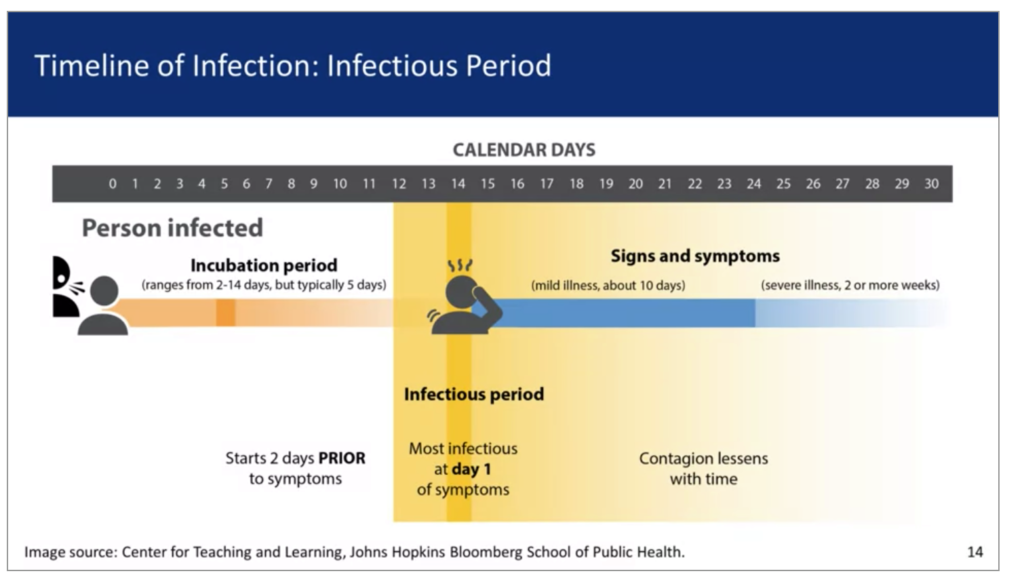Coronavirus 101 explainer, please!!!
A: We empathize – there are so many terms to learn.
For us, too! It’s literally impossible to be an expert on every dimension of the pandemic). This timeline courtesy of the Johns Hopkins School of Public Health helpfully visualizes the two concepts, along with how they link up chronologically.
Here are the basics:
The INCUBATION period is the time from when someone is infected until symptoms develop. For COVID-19, emerging evidence suggests that the incubation period can range from 2-14 days (5ish days is typical).
The INFECTIOUS period is the time period during which someone infected with the Coronavirus can transmit it to other people. Emerging evidence demonstrates that for COVID-19, the infectious period starts 2 days prior to the appearance of symptoms and that individuals with COVID-19 are most infectious at day 1 of symptoms. It lasts for at least 10 days.
A few related implications:
1. With each subsequent relaxation of physical distancing policies we’re going to face a two(ish) week lag for new symptomatic cases to appear and a 2+ week lag for severe cases to appear.
2. As caring citizens interested in protecting others, we’ll be wise to note that infected individuals are most infectious at the onset of symptoms (assuming, of course, that symptoms appear). So at the first appearance of ANY COVID-19 like symptoms we should be extra vigilant to socially isolate ourselves from others.
For more *terrific* Coronavirus 101 info, we recommend the (free!) COVID-19 contact tracing course on Coursera (url in comments section below). It provides five(ish) hours of amazing content, broken out into very small chunks (10-15 minute intervals). It’s likely to become a pre-req for many of the contract tracing workforces being hired right now, and is intentionally designed to help laypeople become literate about both the Coronavirus and public health basics.



